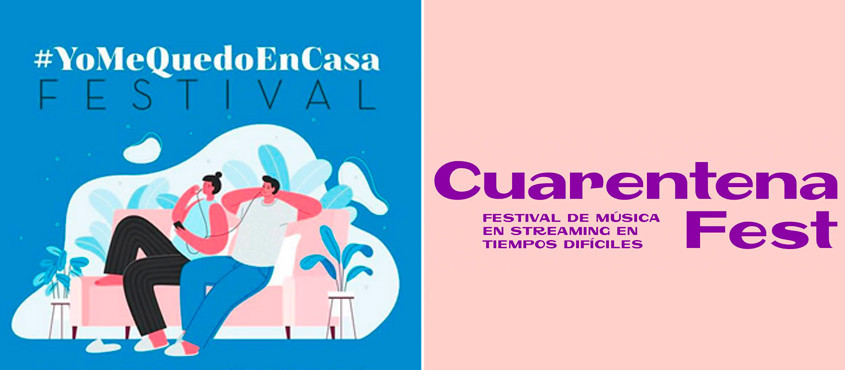
No one denies the obvious. Culture and leisure in its most traditional exhibition formats have been one of the biggest victims of the coronavirus. The closing of movie and concert halls, museums, exhibitions, theatres and libraries, among others, and the subsequent confinement in the home have hampered consumption habits via physical methods. Even so, culture is subversive and in difficult times it has always found alternative ways to spread knowledge through other media. And, in this case, despite the confinement, cultural life continues behind the screen in fully digital terrain.
The virus has not stopped the immense power of culture with its multiple channels of expression that allow it to keep its objectives intact: to spread knowledge, contemplate beauty, stimulate the imagination and create critical opinion. In fact, in the last week confinement has put to the test the ingenuity and creativity of many artists who have devised new proposals to experience culture from the sofa at home. From sporadic festivals to virtual visits, streaming talks or improvised courses. Every day new and original small-format initiatives emerge, in addition to those promoted by the world’s main art centres, to expand the list of cultural activities offered as an alternative to entertain and animate the days when people are shut-in at home.
Here we suggest some ideas for continuing to feed the intellect from home.

Virtual art
Museums and cultural centres around the world are still open virtually. This is the example of the Thyssen, the Prado, the Reina Sofía or the Museu Nacional d’Art de Catalunya, which offer virtual tours, videos, audios, conferences and even online courses to enjoy the cultural activities of these Spanish cultural venues. Internationally the Uffizi in Florence, the Vatican Muses, the Louvre, the Metropolitan in New York and the National Gallery in Washington stand out, for example, which also show visitors their online collection. For its part, Google,via its app, Arts and Culture, offers virtual reality guided tours of museums, masterpieces and even the construction of the statue of Liberty in New York. In fact, the almighty Google collects more than 7,000 virtual exhibitions from all over the planet. The difficult thing in this case, is to choose the sample to look at. For its part the benchmark for contemporary art, the MOMA, is also offering 6 interesting courses related to fashion, art, photography and design, all for free and without leaving home.

Theatre and performing arts
The performing arts also offer facilities to digital users. The Teatroteca of the Ministry of Culture is available with more than 1,500 plays, circuses and dance with works available to users such as ‘The house of Benarda Alba’, ‘Life is a dream’ or ‘Blood weddings’. Anyone can access them through a free online registration through Bibliotecacdt.mcu.es. For its part the New York Metropolitan Opera is offering great classics of the genre in streaming such as ‘Carmen’, ‘La Boheme’, ‘La Traviata or‘ Il Trovatore ’.

Series and films
Digital payment platforms for viewing audiovisual content have experienced a new boom in subscriptions that show the increasing consumption of series, documentaries and films among confined users. Apart from the kings of streaming, there are also other public websites such as RTVE or Televisió de Catalunya that offer series and movies for free and legally. Other pages such as Efilm.online and Ebiblio.es have a catalogue of free movies, books and magazines for those who have a library card. Libraries, such as Nacional or Catalunya, and websites such as Google Books also offer free reading.
Live music
Music knows no borders. And less in difficult times, where it shows the great ability to break barriers and reach all corners and audiences. Initiatives of all kinds have emerged from social isolation: from sporadic concerts through Instagram grouped in hashtags that are running like wildfire on the Internet such as #YoMeQuedoenCasa to alternative music festivals such as the Quarantine Fest to make the state of confinement more bearable. This latest initiative brings together 50 bands that offer private concerts from their homes through YouTube. Some anonymous artists have even come out onto their balconies to perform songs a cappella, or with their musical instruments, to offer impromptu live concerts to their neighbours.

In the coming days, the cultural offer will increase to maintain a certain normality from home. Evidently the consumption format changes because coronavirus has reduced the aesthetic experience to the window of a screen. Also missed is that essential social component that sustains culture: to climb on a stage, to comment on some works that excite,to walk through an exhibition… but we are sure that when this situation is over we will perceive (and appreciate) beauty in another way and from all possible areas. One last tip: keep your wifi well-connected!
